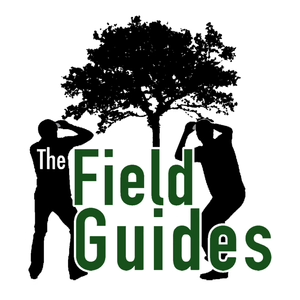
The Field Guides
The Field Guides
All episodes
Best episodes
Top 10 The Field Guides Episodes
Goodpods has curated a list of the 10 best The Field Guides episodes, ranked by the number of listens and likes each episode have garnered from our listeners. If you are listening to The Field Guides for the first time, there's no better place to start than with one of these standout episodes. If you are a fan of the show, vote for your favorite The Field Guides episode by adding your comments to the episode page.
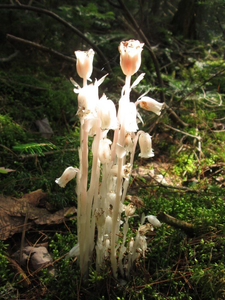
Ep. 45 - In Search of A Nice Set of Pipes
The Field Guides
07/26/20 • 70 min
During the editing process for this episode, Bill shared some posts about this species via social media. Several listeners commented that, in an effort to acknowledge problematic botanical names, many sources now refer to this plant as Ghost Pipe. So, although it was too late to re-record the episode, Bill altered these notes to reflect the name change.
Several times in the episode, Steve and Bill wondered if a stand of Monotropa uniflora was composed of separate plants growing closely together or if it was a single plant with multiple stalks rising from a common rootstalk. In doing follow-up research, Bill could not find a conclusive statement, but in going through pictures of herbarium specimens, drawings of harvested plants, and numerous descriptions, every instance showed each Ghost Pipe stalk having its own, single bundle of roots at its base. So, for now, Bill is going out on the proverbial limb and saying that each stalk is an individual plant.
The guys questioned whether Beechdrops (Epifagus virginiana) was in the Ericaceae family, along with Ghost Pipe, and Steve went on to say that he thought it might be in the Broomrape family – Orobanchaceae. He was correct!
Bill mentioned that Steve is now a published researcher. He was one of the authors on a paper looking into how plants evolve certain chemicals. Check out an article about the paper here, and here’s a link to the paper, itself.
Bill mentioned that, although Monotropa uniflora seems extraordinary because it lacks chlorophyll, “there are some 3000 species of non-photosynthetic vascular plants in the plant kingdom (about 1/2% of all vascular plants). Steve wondered aloud if this number was greater than all the gymnosperms out there (non-flowering plants, like pines). Steve was correct again! There are roughly 1000 extant species of gymnosperms.
Steve questioned what you call an animal that feeds on sap. According to Wikipedia, it’s a gummivore. Gummivores are a hybrid class of omnivores that defines a group of animals whose diet consists primarily of the gums and saps of trees (about 90%) and bugs for protein.
Steve mentioned that there are trees in the Gentian family, and then he went on to joke about whether or not there are any woody orchids. Well, Bill checked. There aren’t any.
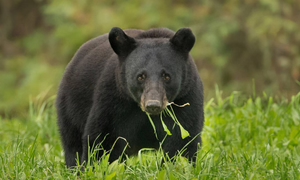
02/01/20 • 71 min
During this episode, Bill breaks down the topic of reproductive delays, with a special focus on the American black bear (Ursus americanus). Come join the guys as they “peek inside the den”, and uncover this seldom-discussed aspect of the sex lives of some of our fascinating (and randy) mammals.
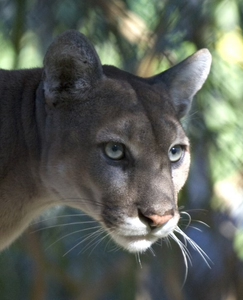
Ep. 63 - Field Trip!: On the Trail of the Florida Panther
The Field Guides
02/22/24 • 72 min
Florida Panthers (Puma concolor couguar) are a distinct population of pumas that live predominantly in southwest Florida. Pumas used to roam the entire United States, but habitat loss and overhunting in the 1800’s and early 1900’s caused them to disappear from much of their range. Every breeding population of pumas East of the Mississippi river vanished, except for one. South Florida, due to its wild and swampy nature, was able to thwart human development just enough for its inhabiting pumas to narrowly avoid oblivion. These surviving pumas, or Florida Panthers, represent the resiliency of wild south Florida. The decades since their near extinction have been filled with controversy, conservation, and politics. This iconic cat still has many challenges to face, and with only 200 or so remaining in the wild, their future is uncertain.
Daniel was first introduced unofficially to this animal during his first trip to Everglades National Park in 2017. The Florida Panther and the swampy, remote areas in which they are found captivated Daniel’s imagination. Every subsequent trip to the Everglades and southwest Florida had at least some time dedicated to searching for this cat, all to no avail. In January 2024, after spending months preparing and researching, Daniel embarked on a five-day solo trip in the backcountry of the Big Cypress National Preserve, with the sole objective of finally crossing paths with a panther.
But what exactly IS a Florida Panther? Are they only found in Florida? Are they black? What is the difference between a Florida Panther and a mountain lion? And of course... do they eat people?!
Luckily, Bill was able to meet Daniel in south Florida to record an episode about the Florida Panther and tackle the questions and misconceptions that leave this cat shrouded in mystery.
This episode was recorded on January 8th, 2024 at Everglades National Park in Homestead, FL.
Episode Notes
When Daniel was talking about Florida Panther size, they were described as smaller than other pumas out west. It should also be noted that while they do fall to the bottom of the size and weight scale of pumas in North America, the populations of pumas closer to the equatorial rain forests in South America are even smaller. This reinforces the notion discussed in the podcast that pumas in colder climates or higher elevation tend to be larger than pumas in warmer climates and lower elevation.
Also, Bill asked Daniel what their life span was, and Daniel was not sure. Bill guessed 20-30 years. According to Florida Fish and Wildlife Conservation Commission, “Panthers can live up to 20 years or more in the wild. Female kittens have a good chance of living 10 years or more. Males have a tougher time, but if they survive to five or six years old, they are likely to live even longer to 10 or more years.” Nicely done Bill!
While discussing vehicular collisions as the number one cause of death of Florida Panther, Bill and Daniel discussed how in 2023, 13 Florida Panthers were killed by vehicular strikes. So far in 2024, there have been five.
Bill and Daniel referred to the rule about animals being larger the farther you get from the equator, but they couldn’t remember the name of the rule. It’s Bergmann’s Rule, and it’s defined as: “one of the best-known generalizations in zoology. It is generally defined as a within-species tendency in homeothermic (warm-blooded) animals to have increasing body size with increasing latitude and decreasing ambient temperature. That is, Bergmann's rule states that among mammals and birds, individuals of a particular species in colder areas tend to have greater body mass than individuals in warmer areas. For instance, white-tailed deer are larger in Canada than in the Florida Keys, and the body size of wood rat populations are inversely correlated with ambient temperature. This principle is named after a nineteenth-century German biologist, Karl Bergmann, who published observations along these lines in 1847.” - from The New World Encyclopedia
Links
Panther Pulse, the database containing documented Florida Panther deaths and depredations: https://myfwc.com/wildlifehabitats/wildlife/panther/pulse/
Path of the Panther: https://pathofthepanther.com
Sponsors and Ways to Support Us
Gumleaf Boots, USA (free shipping for patrons)
Thank you to Always Wandering Art (Website and Etsy Shop) for providing the artwork for many of o...
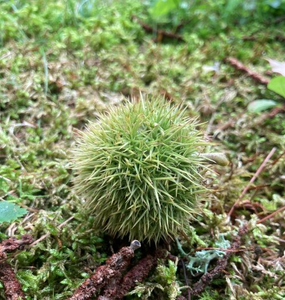
Ep. 53 - The American Chestnut & the Western NY Land Conservancy @ the Allegany Wildlands (Part 2)
The Field Guides
08/31/21 • 63 min
This month, Bill and Steve look into the fall and (potential) rise of the American chestnut (Castanea dentata), and they’re joined by Erik Danielson, Stewardship Coordinator of the Western NY Land Conservancy. The Conservancy recently embarked on an effort to acquire the Allegany Wildlands, a unique piece of property that harbors, among its many abundant ecological treasures, remnant American chestnuts. Erik guides Bill and Steve through the property, and, in part 1 of this episode, they discuss the history of the chestnut and the blight that caused its downfall. In part 2, they share how past and present research come together to create a realistic plan for bringing the American chestnut back. Throughout both parts, Erik shares how the Allegany Wildlands fit into the Conservancy’s ambitious effort to create the Western NY Wildway, a network of connected protected lands stretching from Pennsylvania to the Great Lakes and beyond.
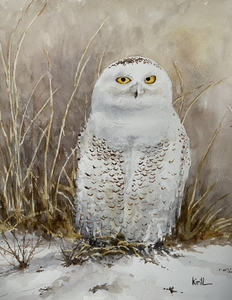
Ep. 49 - Whither the Snowy Owl? (Part 1)
The Field Guides
02/11/21 • 60 min
This winter (2021) marked the first time a Snowy Owl (Bubo scandiacus) was spotted in New York City’s Central Park in 130 years. Why was it there? Where did it come from? Since 99.9% of the population immediately just thinks of Harry Potter when Snowy Owls are mentioned, the guys wanted to cast the proverbial “Lumos!” and shed some light on the subject.
Join them and guest Daniel Mlodozeniec (photographer and naturalist) as they delve into the Snowy Owl’s ecology in part 1. Then, in part 2, come along as they look into the research behind what drives Snowy Owl irruptions, those irregular migrations that cause Snowies to end up in Central Park and even in places like Bermuda and Hawaii!
This episode was recorded on February 1, 2021 in Buffalo, NY at the Erie Basin Marina (part 1) and Tifft Nature Preserve (part 2).
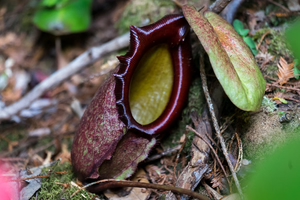
Ep. 48 - Eat Sh*t and Live, Bill (Part 2)
The Field Guides
11/15/20 • 49 min
Now that Bill’s done droning on about animals, we can finally talk about PLANTS! and CARNIVOROUS plants at that. Steve reviews carnivorous plants in general and then breaks into examples of carnivorous plants that have evolved to eat poop: Roridula spp. in South Africa, Sarracenia purpurea in North America, & Nepenthes spp. in Southeast Asia.
00:00 - Intro
02:00 - Carnivorous plant review
14:20 - Roridula spp. & Pameridea spp.
23:10 - Sarracenia purpurea & its inquilines
26:00 - Gumleaf USA ad
28:35 - Nepenthes lowii, N. macrophylla, N. raja & mountain tree shrews
36:45 - Nepenthes hemsleyana & Hardwicke’s Woolly Bat
40:10 - Nepenthes bicalcarata & diving/swimming ants
45:05 - Concluding remarks
46:20 - Outro
Image credit:
"Nepenthes raja, eine freischfressende Kannenpflanze. Gesehen im Botanischen Garten beim Gunung Kinabalu Headquater, Sabah, Borneo" by anschieber
Useful Links:
True Facts: Carnivorous Plants
Gumleaf Boots, USA (free shipping and 10% off for patrons)
Support us on Patreon!
Work Cited:
Byng, J.W., Smets, E.F., van Vugt, R., Bidault, E., Davidson, C., Kenicer, G., Chase, M.W. and Christenhusz, M.J., 2018. The phylogeny of angiosperms poster: a visual summary of APG IV family relationships and floral diversity. The Global Flora, 1, pp.1-35.
Ellison, A.M. and Adamec, L. eds., 2018. Carnivorous Plants: physiology, ecology, and evolution. Oxford University Press, Ch. 1, 3, 13, 24, 26.
Groover, A.T., 2005. What genes make a tree a tree?. Trends in plant science, 10(5), pp.210-214.
McGhee, G.R., 2011. Convergent evolution: limited forms most beautiful. MIT Press.
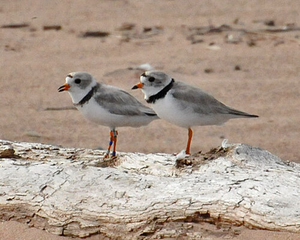
Ep. 46 - The Piping Plovers of Sandy Island Beach
The Field Guides
09/02/20 • 49 min
Links:
Sandy Beach Island State Park (Pulaski, New York)
Piping Plover running (video)
Piping Plover chick running (video)
Piping Plover chick hiding under their mom (video)
Rockaway Beach (Queens, New York)
An article about Claire and her team (Article)
New York State Parks Blog about the Piping Plovers (Article)
Report Banded Piping Plovers (or email [email protected])
Great Lakes Piping Plovers of New York (Facebook page)
Notes:
Coordinators on the project include US Fish and Wildlife, SUNY ESF, Onondaga Audubon, and the staff at NYS Parks
The project and Claire’s position are funded annually by the USFWS Great Lakes Restoration Initiative (GLRI) grant funding from the Federal Government, DOI, with Regional efforts led by Robyn Niver.
Errata:
Claire mentioned that the Piping Plover weighs the same as a stick of butter. She informed us that she misspoke and meant to say that they weigh about the same as a half of a stick of butter. They’re also about the height of a stick of butter stood up on its end.
Picture credit:
"Piping Plovers" by U.S. Fish and Wildlife Service - Midwest Region
Works Cited:
Robinson, S., Fraser, J., Catlin, D., Karpanty, S., Altman, J., Boettcher, R., Holcomb, K., Huber, C., Hunt, K. and Wilke, A., 2019. Irruptions: evidence for breeding season habitat limitation in Piping Plover (Charadrius melodus).
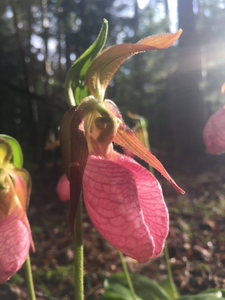
07/05/20 • 72 min
This episode is all about those gross jelly blobs that you might see in marinas (AKA Bryozoans!). Bill and Steve are joined by Jajean Rose-Burney, Deputy Executive Director of the Western New York Land Conservancy. Jajean guides Bill and Steve around The College Lodge Forest in Chautauqua County, NY, a wildlife-rich property that the Land Conservancy is seeking to preserve.
Episode Notes
Listener Kathleen wrote to us asking us about Jajean's comment that the College Lodge property sits on the Continental Divide. Most people, I think it's safe to say, upon hearing the term "continental divide" would think of the divide that runs through the Rocky Mountains - technically known as the “Great Continental Divide”.
But North America has six continental divides (see this link), and the divide that runs through the College Lodge property would be the St. Lawrence Continental Divide. Thank you to Kathleen for pointing out this potential point of confusion that we should have clarified!
Steve mentioned that bryozoans sometimes compete with “turnicates”, but he meant to say “tunicates”. These are aquatic invertebrate animals. Here’s the wiki with some pictures and info.
Links
The College Lodge Forest - Info and link to donate
Bill Mckibben’s article: Racism, Police Violence, and the Climate Are Not Separate Issues
The Role of Land Trusts in Biodiversity Conservation on Private Lands
Donate:
Sponsorship of this episode provided by Gumleaf Boots, USA
Free shipping offer code for Patreon supporters: TFG2019
Support The Field Guides through Patreon!
As always, check out Always Wandering Art (Website and Etsy Shop), who usually provides the artwork for our episodes!
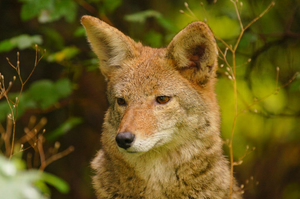
Ep. 43 - The Coyest Dog Around (Part 1)
The Field Guides
04/12/20 • 71 min
Awooooo! This month, Bill and Steve talk all about coyotes.
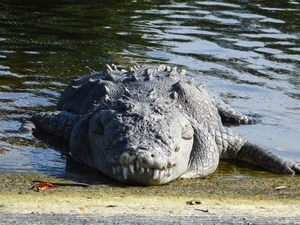
Ep. 71 - The Field Guides Go Crikey!
The Field Guides
01/31/25 • 73 min
The guys return to Everglades National Park, again looking for a predator that Daniel wants to get too close to: the American Crocodile (Crocodylus acutus). Listen in as Daniel shares some research, busts croc-related myths, and Steve probably gets a little too excited about how crocs deal with salt water. Bill doesn’t have much to say, but he’s there, too. Enjoy!
This episode was recorded on January 7, 2025 on the Bear Lake Trail in Everglades National Park. The last bit where the guys find the croc was also recorded in the Park, at the Flamingo Marina.
Episode Notes and Links
As promised during the episode, Steve is looking into how crocs process and excrete excess salt. As soon as he gets to the bottom of it, we’ll share it here.
In the meantime, here’s what Bill found when he asked DeepSeek: Crocodiles, like many other marine and estuarine reptiles, have specialized salt glands to help them excrete excess salt from their bodies. These glands, known as salt glands or lingual glands (located on their tongues), actively transport salt ions (primarily sodium and chloride) from their bloodstream into the gland ducts. The salt is then excreted as a concentrated saline solution, which is expelled from the body.
Crocodiles do not chemically change the salt (sodium chloride) into something else. Instead, they filter and concentrate it, allowing them to maintain proper electrolyte balance in their bodies, especially when living in saltwater environments. This process is crucial for osmoregulation, as it prevents dehydration and helps them survive in both freshwater and saltwater habitats.
In summary, crocodiles excrete salt in its original form (sodium chloride) but in a highly concentrated solution, rather than transforming it into a different substance.
Sponsors and Ways to Support Us
Gumleaf Boots, USA (free shipping for patrons)
Thank you to Always Wandering Art (Website and Etsy Shop) for providing the artwork for many of our episodes.
Support us on Patreon.
Check out the Field Guides merch at our Teespring store. It’s really a great deal: you get to pay us to turn your body into a billboard for the podcast!
Works Cited
Admin, CrocAttack. “Database.” CrocAttack, CrocAttack, 17 July 2023, crocattack.org/database/.
Balaguera-Reina, S. A., M. Venegas-Anaya, V. Beltrán-López, A. Cristancho, and L. D. Densmore III 2018. Food habits and ontogenetic dietary partitioning of American crocodiles in a tropical Pacific Island in Central America. Ecosphere 9(9):e02393. 10.1002/ecs2.2393
Briggs-Gonzalez VS, Basille M, Cherkiss MS, Mazzotti FJ. American crocodiles (Crocodylus acutus) as restoration bioindicators in the Florida Everglades. PLoS One. 2021 May 19;16(5):e0250510. doi: https://pubmed.ncbi.nlm.nih.gov/34010342/
Grigg, Gordon C., et al. Biology and Evolution of Crocodylians. Comstock Publishing Associates, a Division of Cornell University Press ; CSIRO Publishing, 2015.
Mazzotti Frank J. , Balaguera-Reina Sergio A. , Brandt Laura A. , Briggs-González Venetia , Cherkiss Mike , Farris Seth , Godahewa Avishka 2022. Natural and Anthropogenic Factors Influencing Nesting Ecology of the American Crocodile in Florida, United States. Frontiers in Ecology and Evolution Vol. 10. https://www.frontiersin.org/journals/ecology-and-evolution/articles/10.3389/fevo.2022.904576 ISSN=2296-701X
Mazzotti, F.J. The American Crocodile in Florida Bay. Estuaries 22, 552–561 (1999). https://doi.org/10.2307/1353217
Mazzoti, Frank. “American Crocodiles (Crocodylus Acutus) in Florida.” Myfwc.Com, University of Florida IFAS Extension, myfwc.com/media/1847/americancrocodilesinfl.pdf. Accessed Dec. 2024.
Villegas, Alejandro, & Schmitter-Soto, Juan Jacobo. (2008). Feeding habits of the American crocodile, Crocodylus acutus (Cuvier, 1807) (Reptilia: Crocodylidae) in the southern coast of Quintana Roo, Mexico. Acta zoológica mexi...
Show more best episodes

Show more best episodes
FAQ
How many episodes does The Field Guides have?
The Field Guides currently has 89 episodes available.
What topics does The Field Guides cover?
The podcast is about Natural Sciences, Podcasts, Education and Science.
What is the most popular episode on The Field Guides?
The episode title 'Ep. 60 - The True(?) Story of the Bald Eagle' is the most popular.
What is the average episode length on The Field Guides?
The average episode length on The Field Guides is 57 minutes.
How often are episodes of The Field Guides released?
Episodes of The Field Guides are typically released every 32 days, 4 hours.
When was the first episode of The Field Guides?
The first episode of The Field Guides was released on Sep 20, 2015.
Show more FAQ

Show more FAQ